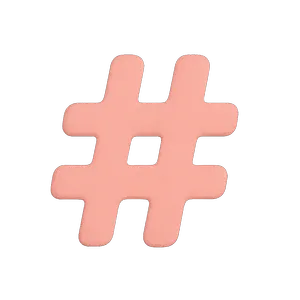In recent years, artificial intelligence (AI) has rapidly transformed the way we live, work, and interact with technology. One of the most exciting and groundbreaking applications of is AI generated images, which utilize complex algorithms and neural networks to produce stunning, realistic images that were previously impossible to create using traditional computer graphics techniques. In this article, we will explore choosing the top AI image generator technologies currently available and evaluate their strengths and weaknesses to determine which one is the best on the market in 2023.
Understanding AI Image Generation
Before diving into the specifics of different AI image generator technologies, it's important to understand how these systems work. AI image generation involves feeding large amounts of data into a neural network, which has the ability to learn and extract features from that data. This network then uses that information to generate new, original images that are similar to the ones it was trained on.
The Science Behind AI Image Generation
At the core of AI image generation is a deep understanding of the principles of machine learning and neural networks. Machine learning algorithms enable computers to learn and improve their performance without relying on explicit instructions, while neural networks are modeled after the structure of the human brain and are capable of recognizing complex patterns and features in input data. Together, these technologies enable AI image generators to create highly realistic and detailed images that mimic the texture, color, and shape of real-world objects and scenes.
Neural networks are designed to learn from data, and the more data they are exposed to, the better they become at recognizing patterns and generating new images. This is why AI image generators require vast amounts of data to be trained on. The data can come from a variety of sources, including photographs, drawings, and even 3D models. The neural network then uses this data to identify common features and patterns, which it can then use to generate new images.

How AI Image Generators Work
AI image generators differ in their specific workflows and algorithms, but they all share a common structure of a neural network that takes in input data and generates an output image. Some AI image generators use a generative adversarial network (GAN) architecture, which consists of two separate neural networks that compete against each other to produce more realistic images. Other systems use a variational autoencoder (VAE) architecture, which encodes input data into a latent space before decoding it into an output image. Regardless of the specific approach, all AI image generators rely on complex mathematical algorithms and large amounts of data to generate high-quality images.
One of the challenges of AI image generation is ensuring that the generated images are both realistic and diverse. To achieve this, some systems incorporate randomness into the generation process, introducing small variations in the output image to make it appear more natural. Other systems use a technique called style transfer, which involves combining the style of one image with the content of another to create a new, unique image.
The Evolution of AI Image Generation Technology
AI image generation technology has come a long way since its inception, with advances in machine learning and neural network architecture prompting rapid improvements in the quality and efficiency of generated images. In particular, recent breakthroughs in unsupervised learning algorithms and natural language processing have opened up new possibilities for AI image generation, enabling systems to generate images based on textual descriptions and other input data beyond traditional image datasets. These advances have resulted in new emerging use cases for marketing like AI photo booths and ai selfie generators like you may have seen recently for the Barbie movie.
As AI image generation technology continues to evolve, it is likely to have a significant impact on a wide range of industries, from entertainment and advertising to manufacturing and healthcare. The ability to generate highly realistic images quickly and easily has the potential to revolutionize the way we create and consume visual content, opening up new possibilities for creativity and innovation.

Comparing AI Image Generator Features
AI generated image technology is advancing and nearly impossible-to-track speeds so let's talk about a few aspects to understand and look out for when researching the tools and platforms offering this tech.
Quality of Generated Images
The quality of generated images is a crucial factor to consider when comparing AI image generator technologies. Most of the new platforms and apps can produce images that are highly realistic and visually appealing, however, there are some differences in terms of the level of detail and complexity of images generated by each system.
For example, some are particularly well-suited for generating images of natural landscapes and scenes because the AI algorithms are trained on a vast database of natural images, which enables them to generate highly realistic and detailed images of natural environments. On the other hand, some are best for generating customized images based on non-image input data. These use advanced algorithms to analyze input data and generate images that match the input data's characteristics.
Depending on your use-case, you'll want to consider what type of output you want to generate and choose platforms appropriately. For designing your own photo experience with custom prompt engineering, contact us about a custom AI photo booth activation.

Speed and Efficiency
Another important factor to consider when comparing AI image generator technologies is their speed and efficiency. In general, faster systems are preferable for users who need to generate large numbers of images quickly and efficiently. Some are particularly fast and efficient system, with a hybrid neural network architecture that enables it to generate images quickly and with minimal computing resources, while some can take up to 30 minutes or more to deliver the requested AI images.
It's also important to note that speed and efficiency may come at a cost. Some systems may sacrifice image quality for speed, while others may require more computing resources to generate high-quality images. Therefore, you should carefully evaluate the requirements and choose a system that meets your needs.
Customization Options
If you require highly customized images that meet specific design specifications or other requirements, the customization options offered by AI image generators are crucial. Platforms particularly well-suited for customization can offer a range of tools and features that enable users to fine-tune the output images to meet specific needs and preferences.
Consider looking for a user-friendly interface that allows you to adjust various parameters such as color, texture, and style, for example. You can also find a wide range of pre-built templates that users can customize to create unique images, while some tech uses advanced algorithms to analyze input data and generate highly customized images that match the input data's characteristics.
Pricing and Accessibility
Finally, when evaluating solutions for AI generated images for any business use-case, it's important to consider their pricing and accessibility. While some platforms may offer advanced features and high-quality output images, they may also be prohibitively expensive or inaccessible due to technical barriers.
There will often be a balance or trade-off for affordable pricing and a user-friendly interface versus deep customization and integration flexibility. AI image generator technologies have come a long way in recent years, and there are now several platforms available that offer high-quality, customizable, and affordable image generation solutions. It's also changing rapidly so you should carefully evaluate your requirements and choose a system that meets those needs.
Some of the Best AI Image Generator Tech So Far
In 2023, several AI-driven technologies have emerged as the best in the field, offering a wide range of applications and creative possibilities. Let's take a look at what we think are the best ones so far:
1. DeepArt.io: DeepArt is an AI-driven image generator that uses deep learning algorithms to create stunning, artistic renditions of your images. By analyzing the styles of famous artists, DeepArt can transform your photos into masterpieces that resemble the works of Van Gogh, Picasso, or other renowned artists. The platform also allows users to upload their styles, enabling limitless possibilities for artistic exploration.
2. RunwayML: RunwayML is a powerful AI platform that caters to artists, designers, and creators looking to harness the power of machine learning. With a wide range of pre-built AI models for image synthesis, RunwayML allows users to generate unique and visually stunning content with ease. From creating abstract art to designing 3D models, the platform offers a wealth of creative possibilities.
3. GANPaint Studio: Developed by researchers at MIT, GANPaint Studio is an AI image generator that utilizes generative adversarial networks (GANs) to create realistic images from scratch. With an intuitive interface, users can "paint" images by adding or removing specific elements, such as trees, clouds, or buildings. The result is a seamless and natural-looking image generated with the help of AI.
4. Artbreeder: Artbreeder is a powerful AI-driven platform that allows users to create unique and visually stunning images by blending multiple input images. With its extensive library of pre-existing images and a user-friendly interface, Artbreeder enables users to generate new, never-before-seen visuals by manipulating features like color, contrast, and style. This tool is perfect for artists, designers, and content creators looking for fresh and innovative visuals.
5. DALL-E: Developed by OpenAI, DALL-E is an AI image generator that can create original images from text descriptions. By inputting a brief description, DALL-E generates a wide array of images that visually represent the given text. This powerful tool can create anything from simple objects to complex scenes, making it a valuable asset for content creators, advertisers, and storytellers alike.

These AI image generators have revolutionized the creative landscape, offering unprecedented capabilities for generating unique and captivating visuals. As technology continues to advance, we can expect even more innovative and groundbreaking tools to emerge in the coming years. So, whether you're a brand, service business, professional artist, designer, or content creator, keep an eye on these cutting-edge AI image generators to elevate your work and unlock endless creative possibilities.
Conclusion
Overall, choosing the best AI image generator technology in 2023 will depend on a range of factors, including the specific needs and preferences of individual users. By evaluating the strengths and weaknesses of different platforms and considering factors such as image quality, speed and efficiency, customization options, and pricing and accessibility, you can make informed decisions and select the system that best meets your needs.
Of course, if you want to discuss creating a custom AI photo booth or AI selfie generator experience, just give us a shout!










-p-500.webp)



.jpeg)















